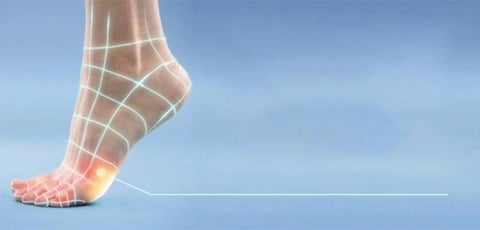Calluses on Feet – Causes, Signs & Management
A callus is a broad area of hard and thickened skin that forms when there is regular pressure or friction.1-3 Calluses are part of the skin’s way of protecting itself, they often occur on the palms of the hands (i.e. manual labour or sport) or the feet (i.e. poor-fitting shoes or walking barefoot).2 Calluses differ to corns, in that corns are more defined, have a central core and occur where the pressure is more concentrated.1,3
Calluses can become problematic when they grow so large that they become sources of other troublesome symptoms.1,2
A foot callus can grow to be painful, which can in turn lead to problems with walking and gait, which in turn leads to over-stressing other parts of the body such as the knee, hip, and lower back.4
What Causes Calluses on Your Feet?
When friction and pressure on your feet increase, more skin cells are produced to form a thick, hardened layer on the surface.1 With continued friction and pressure, these areas of thick, hard skin can develop into a callus.1
The friction or pressure that leads to callus formation may come from a number of sources (often combined):1,2
-
Intrinsic factors — bony features of the foot, faulty foot mechanics, or deformities of the foot
-
Extrinsic factors — tight shoes, irregularities in shoes, open footwear, and high levels of activity
Signs of Foot Calluses
A callus is usually large and occurs on the bottom or side of the foot.1,3 A callus may appear yellow or brown in colour5 with undefined edges.1
Foot Callus Management
Because calluses are the result of mechanical stresses on the skin, treatment focuses on determining the mechanical cause of the callusing, providing symptomatic relief, and ongoing treatment.1
